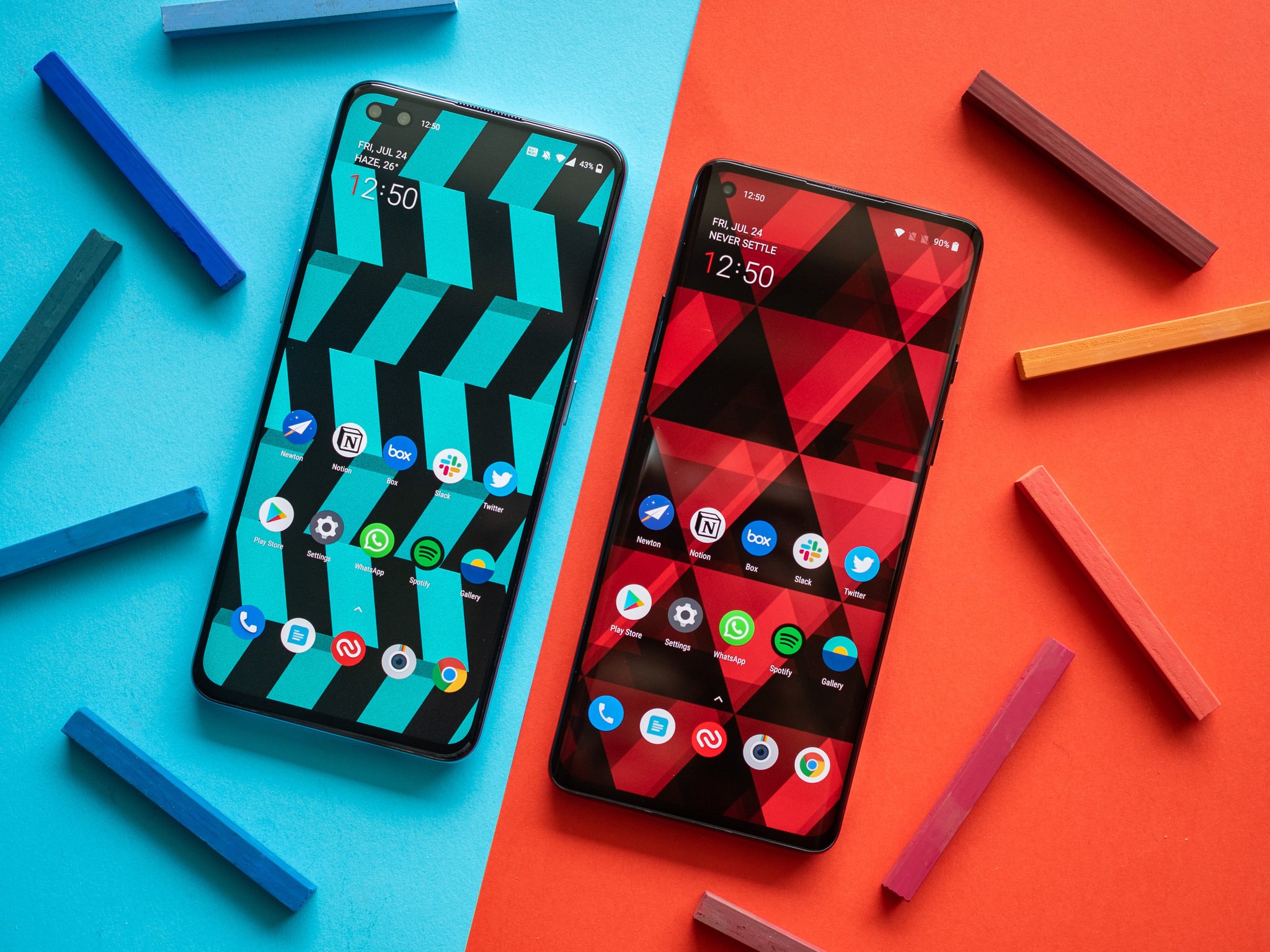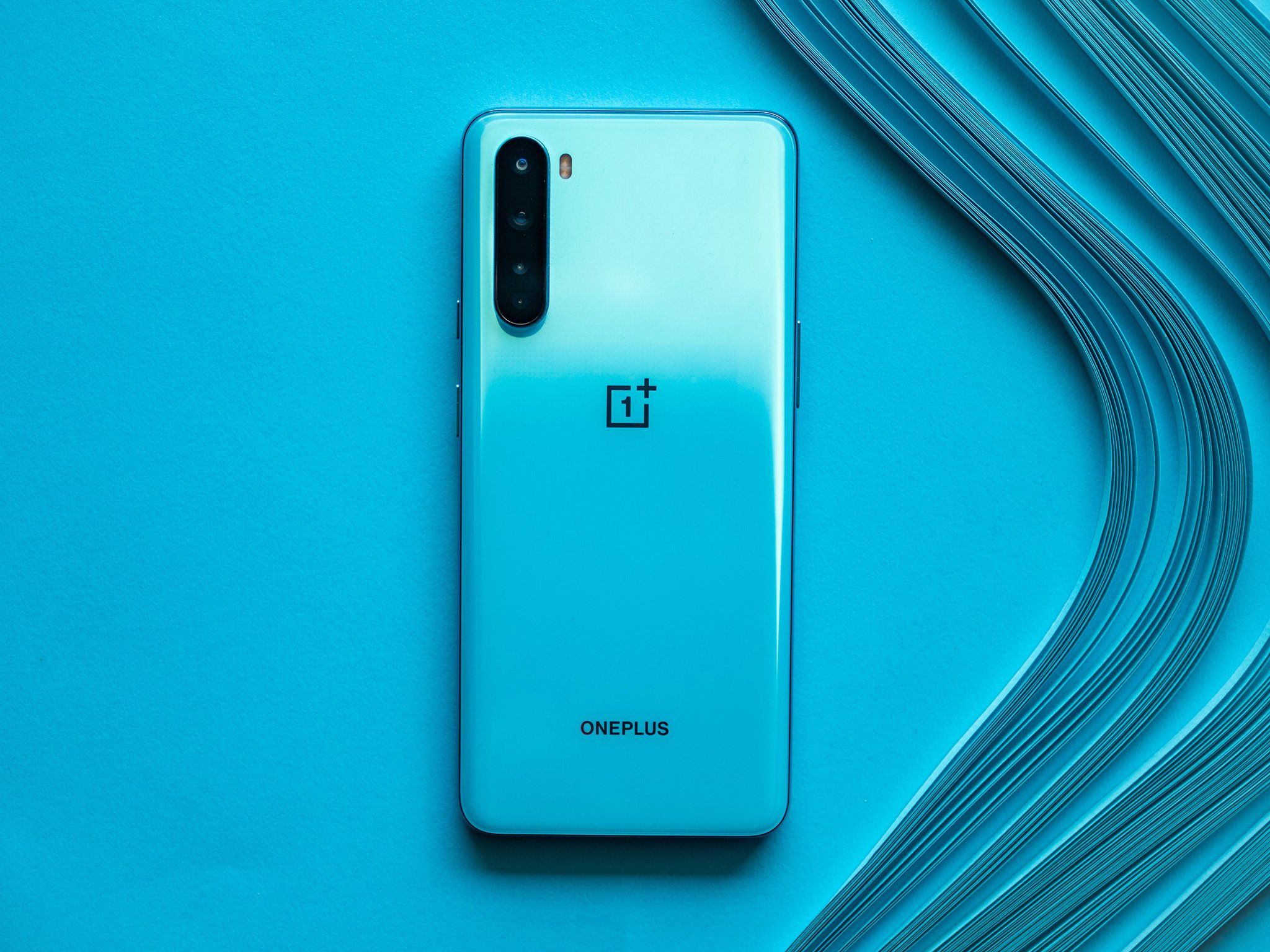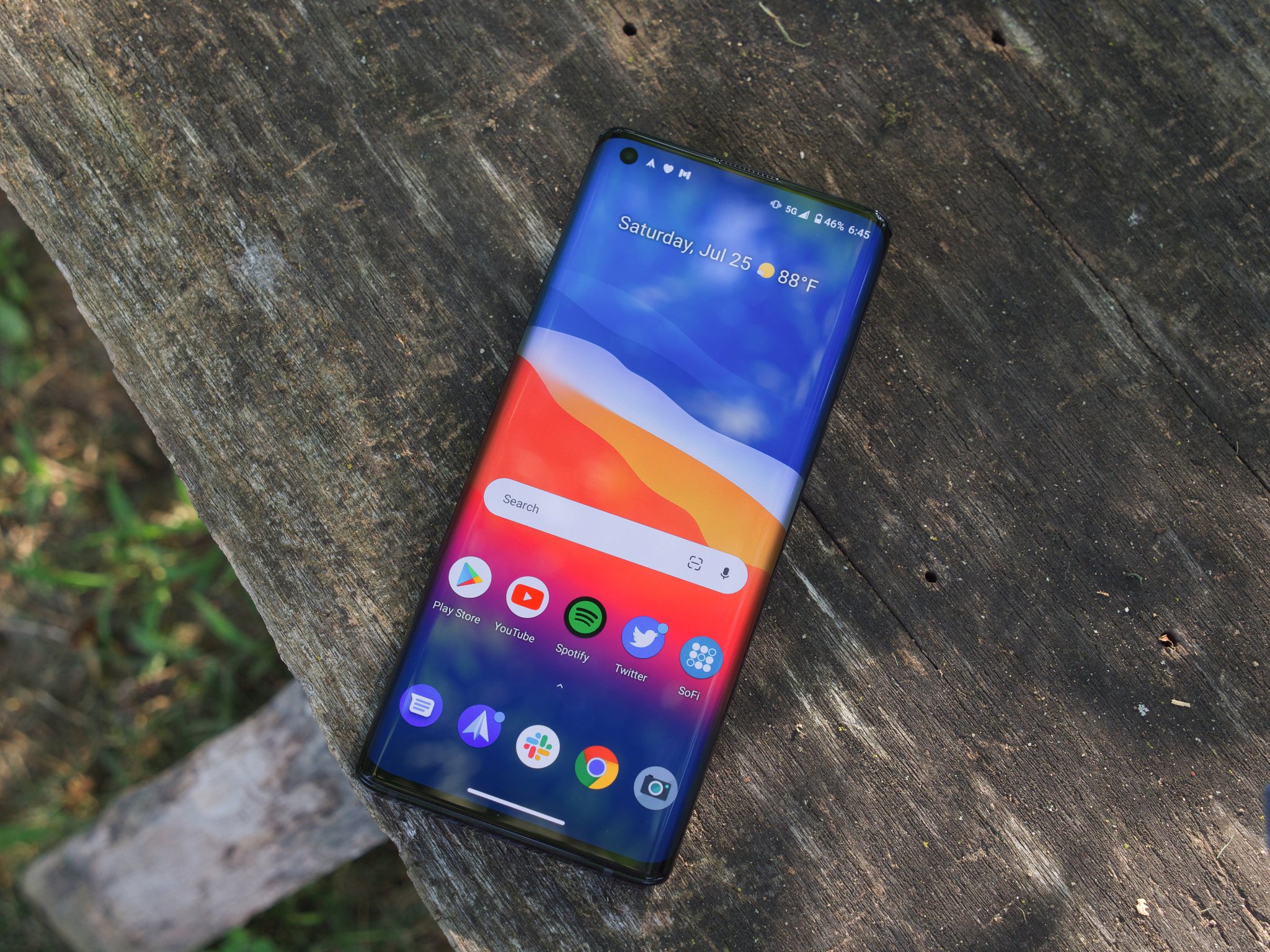Here's why the Snapdragon 765 is now the go-to chipset in the mid-range segment.
With the Snapdragon 765 and 765G, Qualcomm has delivered the perfect mid-range chipset. Qualcomm unveiled the Snapdragon 765 and 765G alongside the Snapdragon 865 at the end of last year, with the chipset positioned as a mid-range design that allows phone manufacturers to roll out 5G-enabled devices for $500.
With the Snapdragon 865 relegated to the premium category because of its cost, phone manufacturers are increasingly looking to the Snapdragon 765 and 765G as the go-to option in the mid-range category. We've already seen devices like the Motorola Edge and LG Velvet powered by the Snapdragon 765 chipset, with the OnePlus Nord featuring the 765G.
And if current leaks are any indication, Google's upcoming Pixel 5 flagship may also be powered by the Snapdragon 765 instead of the Snapdragon 865. So what makes the Snapdragon 765 platform such a good chipset? That's what we're here to find out.
Putting the Snapdragon 765 to the test
The Snapdragon 765 features eight cores in a 1 + 1 + 6 configuration: you get a single "prime" A76 core that goes up to 2.42GHz, another A76 core that goes up to 2.2GHz, and six A55 cores at up to 1.8GHz. There's an Adreno 620 GPU, and the Snapdragon 765 is built on the 7nm node, just like the Snapdragon 865.
Like Qualcomm's flagship chipset, the Snapdragon 765 offers 5G connectivity, but it doesn't rely on an external modem. It features a Snapdragon X52 modem that's integrated into the SoC, allowing for both mmWave and Sub-6 connectivity. The fact that the modem is integrated into the chipset makes things that much easier for phone manufacturers.
With OnePlus exclusively using Qualcomm's Snapdragon 8xx series until the Nord, we have a very solid baseline for testing the Snapdragon 765/765G platform. I'm pitting the mid-range chipset against the Snapdragon 865, Snapdragon 855/855+, Snapdragon 845, Snapdragon 835, and the budget-focused Snapdragon 730 to get a better sense of the performance differential between the two Snapdragon 7xx designs.
I'm mostly using OnePlus devices for testing to make sure there are no software variances to influence the results. For Snapdragon 730 scores, I'm turning to last year's Redmi K20.
Performance
PCMark Work 2.0 (Higher is better)
| Device | Performance | Web Browsing | Video Editing | Writing | Photo Editing | Data Manipulation |
|---|---|---|---|---|---|---|
| OnePlus Nord (SD765G) | 9162 | 7997 | 5959 | 10353 | 16465 | 7952 |
| OnePlus 8 (SD865) | 10775 | 8803 | 5892 | 11882 | 26156 | 9010 |
| OnePlus 7T (SD855+) | 10393 | 8500 | 5892 | 11800 | 23308 | 8813 |
| OnePlus 7 (SD855) | 9187 | 7159 | 5790 | 11055 | 19955 | 7157 |
| OnePlus 6T (SD845) | 8546 | 6670 | 5894 | 9910 | 18013 | 6497 |
| OnePlus 5T (SD835) | 7435 | 6494 | 5970 | 8024 | 13316 | 5489 |
| Redmi K20 (SD730) | 8600 | 8296 | 6826 | 7770 | 13965 | 7200 |
PCMark Work 2.0 is great for emulating real-world usage, making it stand out from other synthetic tests. Looking at the overall scores above, the Snapdragon 765G-powered Nord is on the same level as the OnePlus 7, which runs the Snapdragon 855. But let's delve in and see what the individual scores mean.
The web browsing test is targeted at the energy-efficient cores and tests how long it takes a chipset to render a web page and search for content. With six A55 cores chugging along at up to 1.8GHz, the SD765G pulls ahead of the SD855, with only the SD855+ and SD865 posting better figures — and the SD730. It's clear that the dynamic voltage and frequency scaling for Xiaomi is much more aggressive here, allowing the Redmi K20 to post a higher score.
Qualcomm's mid-range chipsets deliver the same performance as its flagship designs from two years ago.
The video editing suite uses OpenGL ES 2.0 and tests video playback, editing, and how long it takes to save the results. All of the OnePlus devices — including the Nord — are in the same ballpark, but the Redmi K20 pulls ahead with a score of 6826. Once again, Xiaomi's aggressive frequency scaling allows it to eke out a higher score.
The writing test is the best indicator to gauge day-to-day performance, and the SD765G posts a marginally higher score than the SD845, with the SD865 and SD855+ firmly in the lead. The SD730 comes in last, but you can see that it is close to the figures posted by the SD835.
PCMark's photo editing test measures how long it takes to open, edit, and save images. This test emulates how your phone handles adding beautify effects or filters, and the SD765G is once again in the same vicinity as the SD845, with the more recent Qualcomm flagships pulling out a huge margin. The SD730, meanwhile, edges out the SD835.
Finally, the data manipulation test measures how long it takes to crunch data from various file formats, and the frame rate while interacting with charts. 90Hz panels do well here, and we're seeing that to be the case on the Nord as well.
Overall, the Snapdragon 765/765G is on par with the Snapdragon 845, suggesting the chipset is not lacking for power. Sure, it may not be as fast as the latest Snapdragon 865 or last year's 855/855+, but the Snapdragon 845 is still going strong in 2020, and the fact that you get the same level of performance on a mid-range chipset shows how far these designs have come in just two years. On that note, the Snapdragon 730 is equivalent to the Snapdragon 835.
CPU
Geekbench 5.0 (Higher is better)
| Device | Single core | Multi core |
|---|---|---|
| OnePlus Nord (SD765G) | 620 | 1929 |
| OnePlus 8 (SD865) | 894 | 3337 |
| OnePlus 7T (SD855+) | 785 | 2792 |
| OnePlus 7 (SD855) | 748 | 2771 |
| OnePlus 6T (SD845) | 516 | 2374 |
| OnePlus 5T (SD835) | 357 | 1452 |
| Redmi K20 (SD730) | 515 | 1714 |
Geekbench is the ideal indicator of the CPU performance, and here we see the Snapdragon 765 sitting between the SD845 and SD855 in single-core scores. That's down to the more robust A76 cores, with the SD845 running A75 derivatives.
The SD835 came in last because of the outdated A53 cores. The SD765 falls short of the SD845 in multi-core results; that's due to the fact that it has six A55 cores and is tuned for efficiency.
Graphics
3DMark Sling Shot Extreme (OpenGL ES3.1) (Higher is better)
| Device | Overall | Graphics | Physics |
|---|---|---|---|
| OnePlus Nord (SD765G) | 3296 | 3252 | 3456 |
| OnePlus 8 (SD865) | 7248 | 8235 | 5108 |
| OnePlus 7T (SD855+) | 6318 | 7148 | 4491 |
| OnePlus 7 (SD855) | 5768 | 6357 | 4357 |
| OnePlus 6T (SD845) | 4811 | 5206 | 3802 |
| OnePlus 5T (SD835) | 3229 | 3419 | 2704 |
| Redmi K20 (SD730) | 2195 | 2008 | 3252 |
3DMark Sling Shot Extreme (Vulkan) (Higher is better)
| Device | Overall | Graphics | Physics |
|---|---|---|---|
| OnePlus Nord (SD765G) | 3082 | 3154 | 2856 |
| OnePlus 8 (SD865) | 6697 | 8263 | 4028 |
| OnePlus 7T (SD855+) | 5517 | 6687 | 3422 |
| OnePlus 7 (SD855) | 5050 | 5877 | 3384 |
| OnePlus 6T (SD845) | 4521 | 5245 | 3048 |
| OnePlus 5T (SD835) | 2715 | 2869 | 2289 |
| Redmi K20 (SD730) | 2061 | 1918 | 2790 |
3DMark offers a great overview of the real-world graphical performance, and here we see the limitations of the SD765. With the chipset featuring an Adreno 620, it doesn't quite measure up to Qualcomm's flagship designs. The closest it gets to is the SD835, with even the Adreno 630-powered SD845 posting stronger figures.
Does this mean the SD765 is not suited for gaming? Not quite. The scores indicate that the chipset is limited in this particular category, but most games run just fine. One point to consider is that we're pitting the chipset against Qualcomm's best designs over the last three years, and when you look at its performance next to the SD730, you see that it fares much better.
Browser
Jetstream 2.0 (Higher is better)
| Device | Overall |
|---|---|
| OnePlus Nord (SD765G) | 51.998 |
| OnePlus 8 (SD865) | 67.818 |
| OnePlus 7T (SD855+) | 68.284 |
| OnePlus 7 (SD855) | 64.021 |
| OnePlus 6T (SD845) | 50.907 |
| OnePlus 5T (SD835) | 36.309 |
| Redmi K20 (SD730) | 50.668 |
Speedometer 2.0 (Higher is better)
| Device | Overall |
|---|---|
| OnePlus Nord (SD765G) | 53.1 |
| OnePlus 8 (SD865) | 69.4 |
| OnePlus 7T (SD855+) | 66.5 |
| OnePlus 7 (SD855) | 64.5 |
| OnePlus 6T (SD845) | 48.6 |
| OnePlus 5T (SD835) | 38.4 |
| Redmi K20 (SD730) | 44.8 |
Jetstream and Speedometer rely on JavaScript tests to measure browser performance. Once again, we see the SD765 pulling out a marginal lead over the SD845, with the SD865 and SD855/855+ firmly in the lead.
How does the Snapdragon 765 perform in real-world usage?
The synthetic tests show that the Snapdragon 765 is on par with the Snapdragon 845 in terms of CPU performance and the Snapdragon 835 with regards to graphical performance. That means that even though the chipset isn't quite as powerful as the Snapdragon 865, it's no slouch in day-to-day use.
That much is evident after using the OnePlus Nord for two weeks. The Snapdragon 765G feels just as fluid as the Snapdragon 865 in most day-to-day tasks, and it handles most games just fine as well. I didn't see any issues playing demanding games on the Nord, and it's a testament to how far Qualcomm's designs have come in the last two years that you get this level of performance on a mid-range chipset.
My colleague Joe Maring reviewed the Snapdragon 765-powered Motorola Edge and came away very impressed with the performance:
Whether I'm opening apps, browsing the web, or playing a graphically intense game like Call of Duty: Mobile, everything flies like butter on the Motorola Edge. Not once have I encountered any noticeable slow-down or hiccups, and while part of this is helped by the Edge's clean software and 90Hz display, it's a testament to just how good the 765 really is.
To sum it up, while the Snapdragon 765 and 765G may not be as fast as the Snapdragon 865, it doesn't matter in day-to-day use. The Snapdragon 865 is overkill for most users, and the Snapdragon 765 strikes the perfect balance between price and performance, making it one of Qualcomm's best designs in years.
A fantastic choice
Motorola Edge
$500 at Amazon $500 at Best Buy $500 at B&H
A powerful value flagship in 2020
The Motorola Edge delivers incredible performance, and the curved screen and sleek design make it stand out in this category. The battery life is outstanding, the software is clean and doesn't have a lot of bloat, and with the phone debuting for a limited time at just $500, you're getting great value.
from Android Central - Android Forums, News, Reviews, Help and Android Wallpapers https://ift.tt/2XlqLn9
via IFTTT




No comments:
Post a Comment